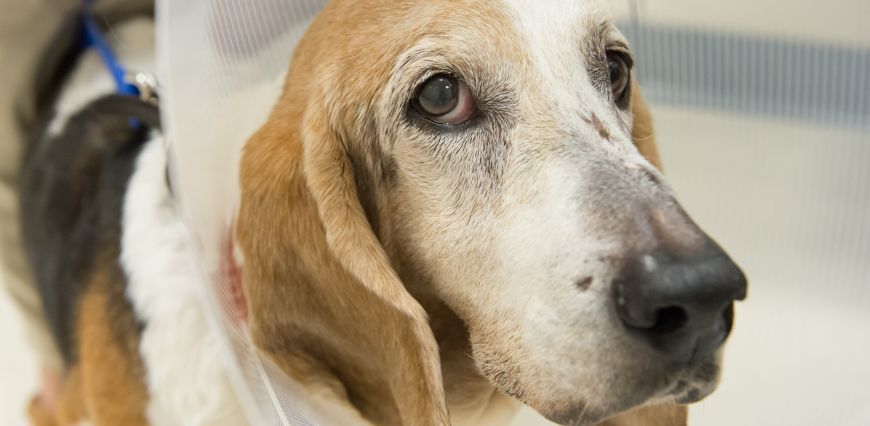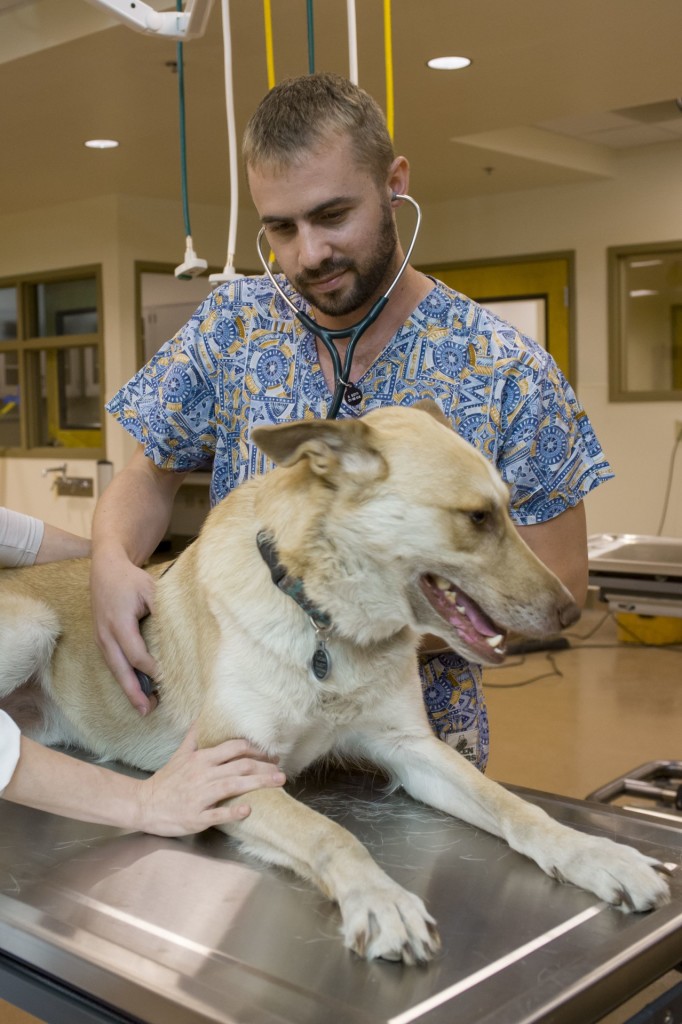
By Dr. Timothy B. Hackett
We humans know to call 9-1-1 or visit an emergency room when faced with serious injury or illness – but what do we do when a pet needs emergency veterinary care?
We cannot plan for an emergency. Yet we can be prepared in case one occurs, and that’s the best approach for medical emergencies with pets.
When considering emergency preparedness, animal owners might wonder, “Whom should I call, and where should I take my pet in a case of acute injury or illness?” Medical emergencies often occur outside standard business hours, so these are important questions to discuss with your veterinarian during a regular office visit, when you aren’t worried about a crisis.
Some veterinary practices see their established patients when emergencies occur after office hours and on the weekends. Others refer patients to specific hospitals or clinics that offer emergency services. Either way, it’s useful to have your veterinarian’s guidance and to know about available resources before you need them.
Once you’ve determined where to seek emergency care, you likely will want to know when this medical attention is needed for your pet.
Some situations are clear. For instance, seek emergency veterinary care if you know your dog has ingested antifreeze, a bottle of human medication or another substance toxic to pets. (Here’s a more complete list.) Likewise, emergency veterinary care is needed if your dog is struck by a car, bitten by a rattlesnake, or suffers deep puncture wounds from the bite of another dog.
But what if your dog or cat acts sick? Maybe your pet starts repeatedly vomiting, develops diarrhea or exhibits behavior that seems notably off.
Understanding normal behavior

In these cases, it is very helpful to fully understand your pet’s normal behavior and vital signs. By knowing signs of normal, you are better positioned to recognize the abnormal. The following steps will provide insights:
- Vital signs: When something is wrong with a pet, its heartrate, breathing pattern and body temperature are often the first changes that may be objectively observed. Discuss with your veterinarian what would be expected as normal measurements for your pet – and, importantly, what type of variation would suggest a need for emergency care.
- Heartrate: Ask your veterinarian to demonstrate how to take your dog or cat’s pulse, meaning how to measure the number of times your pet’s heart beats per minute. Then check and record this rate several times when your pet is relaxed at home. This will give you a good idea of your pet’s “normal.” Significant heart elevation – 20 or 30 beats per minute above normal – would warrant an emergency visit if not associated with exercise.
- Breathing: Take the same approach here that you do in measuring heartrate. Ask your veterinarian for tips, then assess and record how many times your pet breathes per minute under relaxed conditions. Take several measurements to gain a solid sense of what’s normal.
- Temperature: I recommend keeping a digital thermometer dedicated for use with your pet. Practice taking your dog or cat’s temperature under the armpit. (The armpit temp will be a degree or two lower than a core temperature, which is taken orally or rectally, but it’s a good basis of comparison when your pet is at home.) Body temperature varies between species, and even from one individual to another. While normal body temperature in humans is predictable at 98.6 degrees Fahrenheit, normal body temperature in dogs and cats might range from 98 to 102. Normal temps are often lower in large animals and higher in small animals. So the key is knowing what’s normal for your pet.
- Gum color: During physical exam, a veterinarian will often look at the color of your pet’s gums, and might press on the gums to see how fast pinkness returns to the surface after blood has been displaced. This is a way to assess how well tissues are being oxygenated. If the animal is sick or in shock, the gums will appear bluish, pale, or it will take more time for color to return to normal.
A baseline understanding of normal vital signs will help with decision-making if you suspect something is wrong with your pet. This information also will help your veterinarian should an emergency arise.
What to do when seeking emergency care
Here are a few important steps to take when seeking emergency veterinary care for your pet:
- It’s a good idea to have and use a vinyl, form-fitting muzzle if your pet has a medical emergency. These are available at pet supply stores. Even the most loving and docile pets – those that have never snarled or bitten – have the capacity to bite and seriously harm an owner, veterinary professional or someone else when suffering from intense pain. Some of the worst bite injuries I’ve seen have occurred when pet owners were bitten by their own animals during emergencies. To properly care for your pet, you and others must be safe. First responders abide by this “safety first” principle, and it extends to emergency veterinary care.
If your pet is having trouble breathing or has injuries to the face or mouth, you may wrap a towel around the head and neck. This will make it harder for the animal to bite, but will allow for easier breathing.
- Take your pet’s vaccine history and information about any current medications if you are headed in for emergency care, especially if you are seeking help from a clinic or hospital you don’t normally visit.
- Do not give your pet medication without instructions from a veterinarian. Pet owners sometimes give human medications, such as antihistamines and pain relievers, to sick or hurt animals. This can worsen a pet’s problems because dogs and cats metabolize drugs differently than do people. Over-the-counter and prescription medications meant for people can even be lethal for pets. A veterinarian can answer questions about steps to take before emergency care.
Emergencies are always difficult. Yet preparing during normal circumstances will help tremendously if and when your pet has a medical emergency.
Dr. Timothy Hackett is director of Colorado State University’s James L. Voss Veterinary Teaching Hospital. He is a specialist in veterinary emergency and critical care.